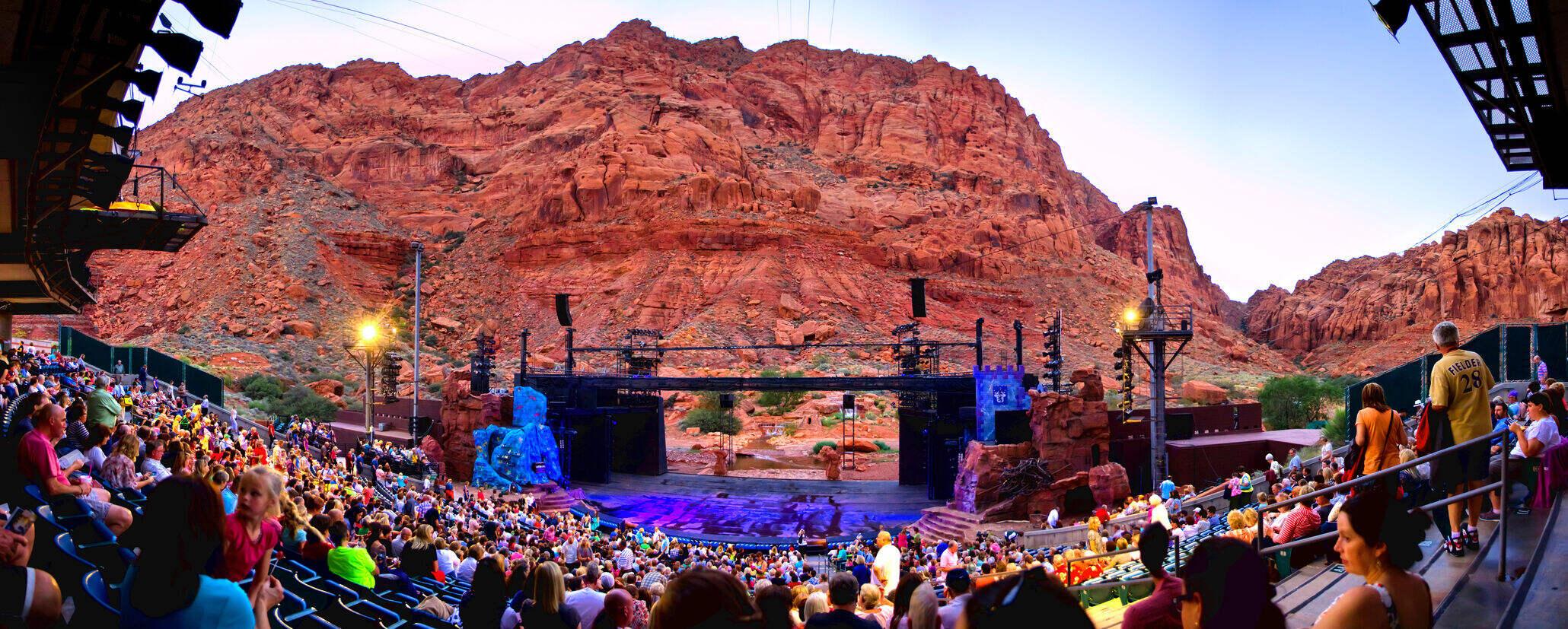
Stargazing in Southern Utah This Fall 2025
Southern Utah is world-renowned for its dark skies and breathtaking landscapes,
making it one of the best places in the U.S. to experience the cosmos. From St. George
stargazing adventures to the deep black skies of Snow Canyon State Park and the
famous night programs at Zion National Park, fall offers visitors a spectacular mix of
seasonal weather, fewer crowds, and unforgettable celestial views.
Stargazing Near St. George
St. George is more than just a gateway city—it’s a destination for night sky seekers in its
own right. Thanks to nearby protected lands and thoughtful dark-sky preservation, you
can step just outside of town and enjoy skies far darker than most urban areas. Resorts
like Black Desert in Ivins make it easy to combine luxury accommodations with direct
access to desert stargazing.
For the best experience, head north toward Snow Canyon State Park. Just 15 minutes
from downtown St. George, the park’s dramatic lava fields and sandstone cliffs frame a
sky ablaze with stars. Its close proximity makes it one of the easiest and most
accessible stargazing spots near St. George.
Stargazing in Snow Canyon State Park
Snow Canyon stargazing is some of the most magical in Southern Utah. The park is
known for its dark skies, unique geology, and striking red-and-black landscape that
glows under moonlight. Fall brings crisp, clear nights—perfect for catching the Milky
Way arching over the cliffs.
Tips for visiting Snow Canyon after dark:
- Choose a pullout or overlook away from headlights.
- Plan around the new moon for the darkest skies.
- Watch the horizon after sunset in September and October for Saturn’s rings
through a telescope.
Stargazing in Zion National Park
Few places combine dramatic canyon walls and star-studded skies like Zion National
Park stargazing. While the main canyon has some light interference, areas like Kolob
Canyons or the east side of the park provide darker, clearer views. Rangers and
astronomy groups often host programs here in the fall, making Zion a great option for
both casual visitors and serious night sky photographers.
Fall evenings at Zion are especially rewarding because the galactic core of the Milky
Way is still visible right after dark. By late October, the core dips below the horizon and
won’t return until April 2026—making autumn the final opportunity of the year to see it
from Zion’s cliffs and mesas.
Planets Visible in Fall 2025
This year, the skies over St. George, Snow Canyon, and Zion will showcase a lineup
of bright planets:
- Saturn – At opposition on September 21, Saturn shines all night and is at its
brightest.
- Mars – Visible low in the western twilight sky in September.
- Venus – The brilliant Morning Star, rising in the east before dawn throughout the
season.
- Jupiter – Bright in the pre-dawn sky, positioned above Venus.
- Neptune – Reaches opposition on September 23, a faint blue dot visible with a
telescope.
Fall 2025 Night Sky Highlights
- September 7 – Total lunar eclipse (Blood Moon), visible across Southern Utah.
- September 19 – Pre-dawn alignment of the crescent Moon, Venus, and Regulus.
- September 21 – New Moon + Saturn at opposition = some of the year’s best
stargazing conditions.
- September 23 – Neptune at opposition, visible with telescopes.
Best Time to View
- Evenings (Sept–Oct): The Milky Way core and Saturn dominate the night.
- Pre-Dawn: Venus and Jupiter shine brightly in the eastern sky.
- Overall: September and October evenings are ideal for Milky Way viewing before
it disappears until spring.
Tips for Stargazing in Southern Utah
- Arrive early to let your eyes adjust to the dark.
- Dress in layers—fall nights get chilly.
- Use a red-light flashlight to preserve night vision.
- Time your visit around the new moon for the clearest skies.
Final Thought
Whether you’re watching the Milky Way arch over the cliffs of Snow Canyon, catching
Saturn’s glow above Zion, or simply stepping outside in St. George, fall 2025 offers an
incredible celestial sendoff before winter skies arrive. Southern Utah’s dark skies aren’t
just a backdrop—they’re a destination.


